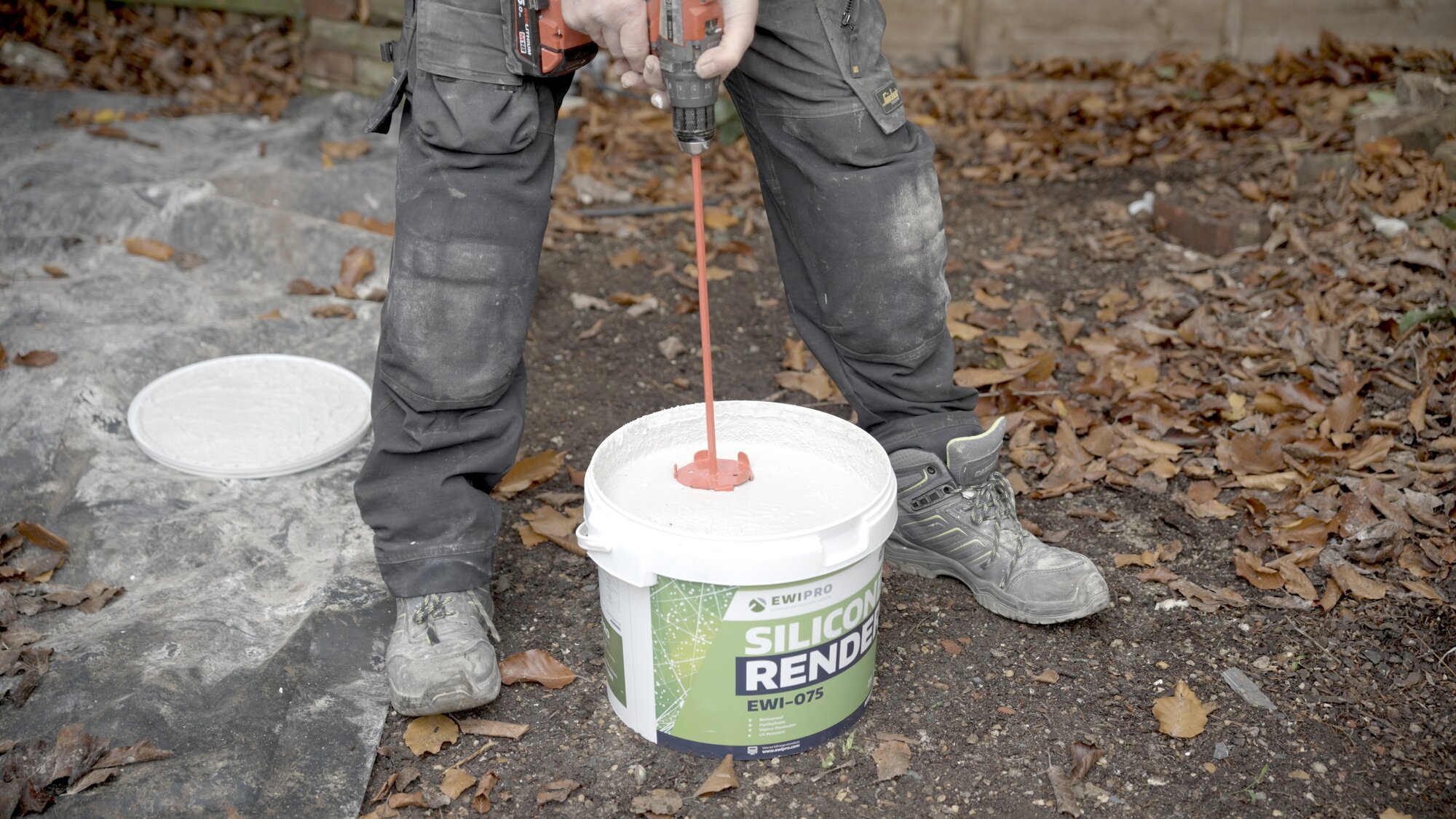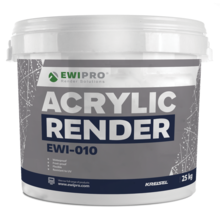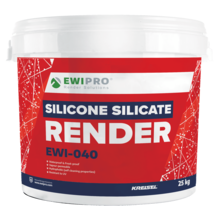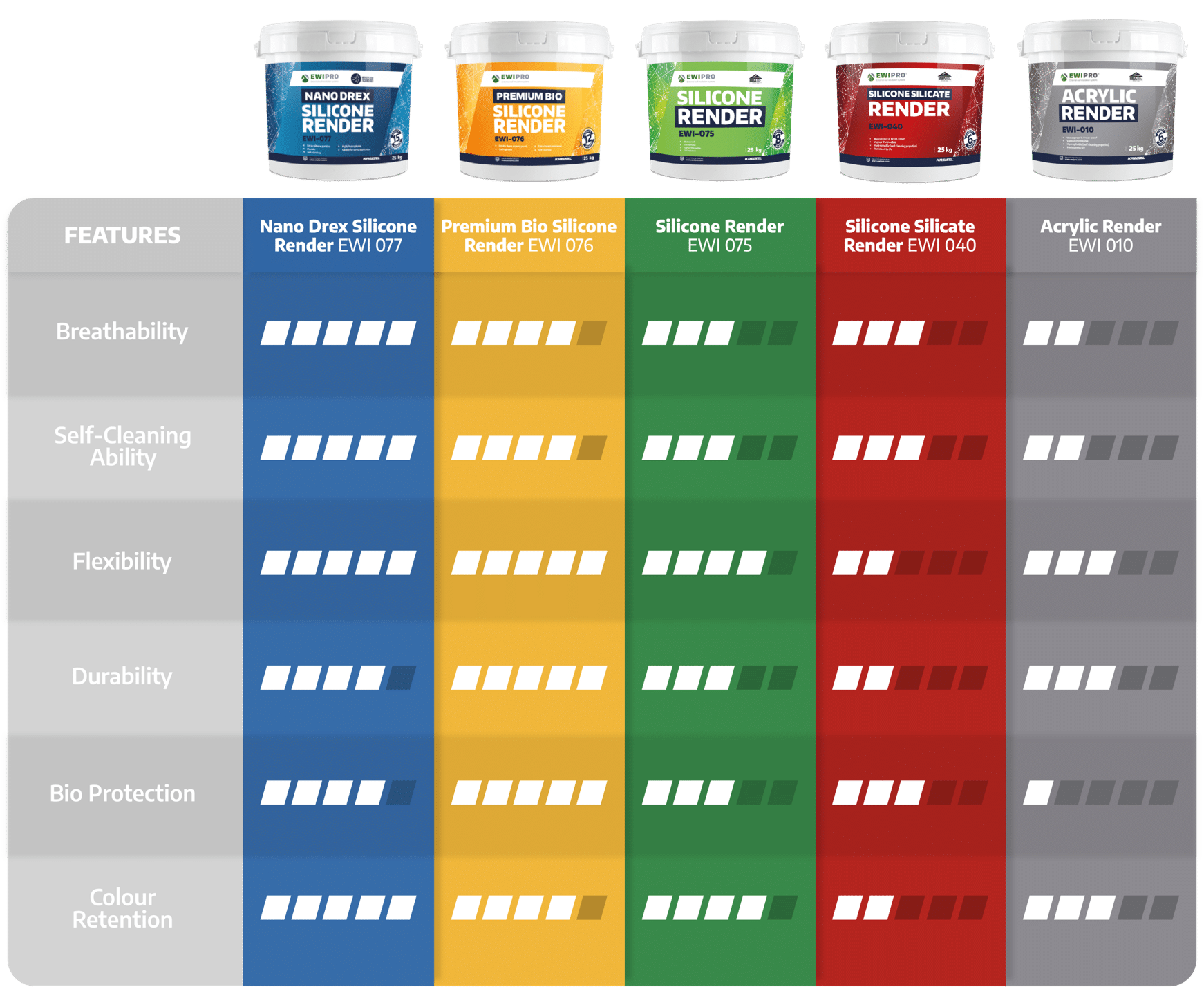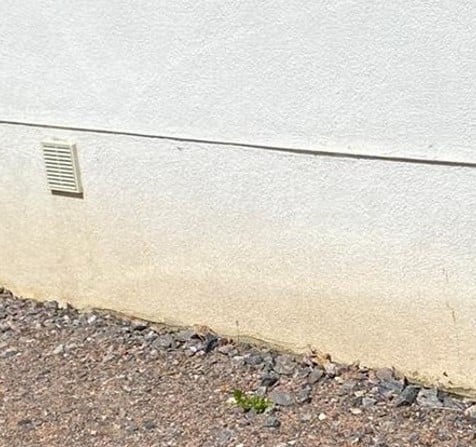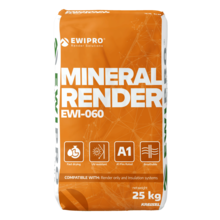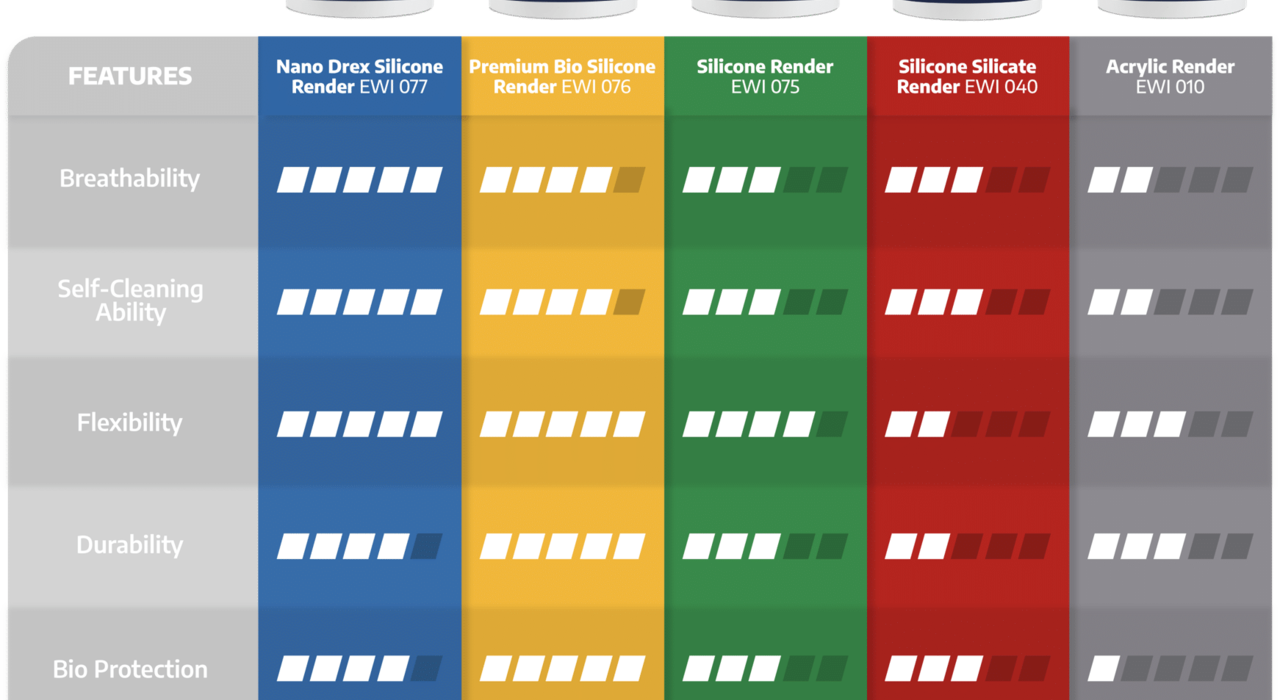
Which render is the best; a question our customers ask us almost daily. The answer is surprisingly complex! All types of render have specific features and benefits that may be more suitable for different projects. Perhaps performance is the most important to you. Alternatively, you may be looking to mimic some heritage features. Regardless of the aim, EWI Store will have the right solution for you. However, let us try and establish which render is the best when all is taken into account.
What is render?
Render is a form of plaster used primarily for external walls. As a result, much of the industry refers to render as topcoat or topcoat render. The reason for this is that it tends to be the last layer of material to complete the assembly. However, some will require you to seal in the external layer to weatherproof the system.
The composition of any render is similar in most instances, being made up of sand, water, cement, and lime. Manufacturers then mix in certain additives that enhance benefits like weatherproofing and flexibility. The sand used in the manufacture must have a fine texture and be free from impurities. This ensures that the resulting product is smooth and also creates a homogenous mixture. Additives can include silicone or acrylic fibres that greatly enhance certain benefits.
Some renders can come pre-mixed in buckets, whilst some others come as a dry mix. The products that come as a dry mix should be combined with clean, potable water and mixed with an electric paddle mixer to achieve a homogenous mixture, free from bubbles and lumps.
Silicone and Acrylic fibres
These topcoat products receive their name from the additives mixed in during manufacturing; microscopic silicone and acrylic fibres enhance certain bonds within the structure, resulting in stronger and more flexible finishes to your façade.
Silicones are by nature, chemically inactive and also have very low surface tension. Therefore, they are not reactive when it comes to mixing with sand or lime. The major features of silicones are:
- Water repellency - Forms a coating to provide enhanced water repellency.
- Rebound resiliency - Forms a flexible elastic coating that "bounces" back when flexed.
- Transparency - Transparent coating forms on the fibre surface. When mixed in with the other materials, silicone fibres make no impact on the final colour.
- Durability - Forms a flexible film that improves overall strength.
- Weather and heat resistance - Siloxane bonds form at an atomic level, which has a high bond energy. Therefore, they will not break at temperatures up to 200°C and are chemically stable, with high-heat resistance and weather-ability.
The major enhancement that acrylic fibres provide is crack resistance. They chemically bond within the mixture and strengthen the overall durability:
'The textile-acrylic fibre-reinforced mortar obtained the highest increase when compared to REF 1:1:6, of 64% in impact energy at first crack. These results indicate that the fibre-reinforced cement-lime mortars presented higher impact energy before the first crack occurs [...] The highest value was obtained for the textile-acrylic fibre-reinforced cement-lime mortar, which increased by approximately 43% relative to the reference mortar, after ageing. In fact, the fibres act as a bridging mechanism across the cracks, which enhances the deflection capacity without failure and improves the mortars’ ductility.' (Maia Pederneiras C, Veiga R, de Brito J. Impact Resistance of Rendering Mortars with Natural and Textile-Acrylic Waste Fibres. Fibers. 2022; 10(5):44. https://doi.org/10.3390/fib10050044)
Silicone and Acrylic Renders at EWI Store
EWI Store stock a range of Silicone Renders, all specially designed to offer extra benefits, extending beyond the ever-present ones. These ever-present benefits include flexibility, durability, hydrophobia, and frost resistance. For example, Premium Bio Silicone Render can break down the presence of biological growth actively. Nano-Drex Silicone Render also possesses this ability and as a result, they are extremely popular choices in high vegetation areas.
EWI-010 Acrylic Render maintains many of the features of its Silicone counterpart, but at a lower price point. However, we do not recommend using this product in thermal wall insulation systems that use hard Mineral Wool panels or on wet walls with a high level of technological moisture. In these instances, we suggest that our customers pivot to Silicone Silicate.
All of these renders are highly resistant to UV rays, which ensures that the colour vibrancy is the same for the whole lifespan of the system.
Monocouche Scratch
The word 'monocouche' is French in origin and translates literally to 'one coat'. However, most monocouche renders are applied in two passes, which enhances the strength and durability of the chemical bonds. The appeal of monocouche render is that it realistically mimics stonework and can also come in a variety of colours. Moreover, it is designed with water-repellence, breathability, and durability in mind. However, in comparison to Silicone Render, it is more prone to cracking. Whilst monocouche render does have additives that enhance the flexibility and crack resistance of a cementitious product, it cannot match Silicone Renders in that department.
It is an incredibly low-maintenance product and is often available at a lower price point than silicone products. Given that monocouche is a thick coat render, with the final thickness after scratching at around 15-16mm, it can be directly applied onto the substrate. This includes substrates that may not be entirely level.
Mineral Render
Mineral Render is a product we refer to as decorative. The design of the product allows it to be hand or spray machine applied. The compatibility with spray application, along with the accelerated drying time, makes Mineral Render the best option for winter applications. Rendering in the winter is hard enough due to the low temperatures and short spells of sunshine. However, by employing Mineral Render, you can make use of the limited time you may have on-site.
The system relies on it being sealed in with an approved Silicone Paint. If left exposed, it is not hydrophobic or freezeproof. It can also be susceptible to lime bloom which is an unsightly problem for your façade. This is because Mineral render contains Portland cement. Lime bloom occurs in white patches and discolouration where “lime” (calcium hydroxide) settles on the surface of the render due to a chemical reaction. This can cause the formation of crystals on your render which can damage the system.
Treating under the DPC
Underneath the DPC is a crucial component of any building assembly as it prevents any rising damp affecting your substrate. Rising damp and penetrating damp can cause structural and well-being issues, therefore need to be avoided at all costs. As part of our under DPC range, Mosaic Render provides precisely the aesthetic yet waterproof surface necessary. The render is also highly durable and can withstand staining and soiling, which is a consistent issue around the building plinth.
So which render is the best?
Ultimately, the answer depends on what you are looking for from your render. Silicone Render will always give you the best overall performance, with unmatched flexibility and breathability. Monocouche Scratch Render offers an attractive option to mimic traditional stonework. Mineral and Mosaic Render are more specialised but also have their place in render-only and external wall insulation systems.
Let us know below which render you think is best!
[ays_poll id=4]

